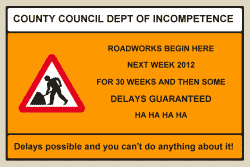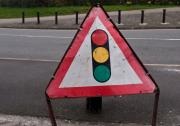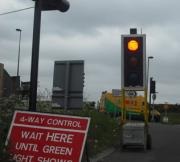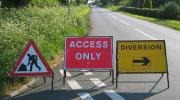This is an interesting one – I’m still split over it.
In New South Wales, Australia, learner drivers have to complete a log book during their training. They have to do 120 hours of driving, which has to be signed off (but not even by an instructor, as I understand).
The current Road Minister, Duncan Gay, says:
“For too long governments have taken the opportunity, if there’s an accident somewhere, to automatically add extra hours to the learner’s permit time.”
Now, in part I agree with that. Accidents among young drivers are not due to inadequate tuition. But it is also a dig at the previous government – so you immediately wonder what point Gay is making. Is he genuinely of the belief that accidents are unfairly blamed on learner tuition and learners per se, or is he simply making vote-winning small talk?
Referring to the change – where learners will be able to knock 20 hours off their required driving hours if they take a driving safety course (which is non-compulsory), he then adds:
“(This) stops parents and children currently becoming criminals because 120 hours is just way too much.”
Mr Gay said he hoped the initiative would deliver a more realistic timeframe for L-platers and stop the some of them from fudging log books.
Ah! So instead of actually dealing with the problem (the accidents), his party is simply going for one of the symptoms – which, coincidentally, will be popular among some of the electorate. They want to move the goalposts for what constitutes “criminal behaviour” instead of dealing with the fact that people are simply happy to behave as criminals.
Not a good sign for the future, Mr Gay.
To make matters worse, the course learners can go on to cut those 20 hours is not free (Gay says they will be “affordable”) – and they will even be able to cut another 20 hours if they take “professional” courses. I’m sure that those will be even more “affordable”.
I think the real attitude to driving is summed up in the next paragraph:
“Further options to assist learner licence holders in remote, lower socio-economic… communities meet learner driver log book hours will also be considered,” Mr Gay said.
Votes, votes, votes. What on earth is the point of arguing that safety isn’t implicated by cutting driving hours, when you’re immediately going to make concession upon concession for minority groups? It is the poorer people who are both prepared to break the law, and financially inclined to do it – and their societal attitude certainly doesn’t push them towards being safe drivers.
Looks like the Aussies have the same problems with government involvement in driver training that the UK does. I wonder if Mr Gay gets his information from his daughter, like our transport minister does?
Incidentally, the proposed changes are reported slightly differently depending on where you look.

 e work ethic is appallingly bad. Let’s hope the quality of the work is a little better, otherwise I might suddenly find myself in Colwick when I thought I was intending to go towards Sherwood!
e work ethic is appallingly bad. Let’s hope the quality of the work is a little better, otherwise I might suddenly find myself in Colwick when I thought I was intending to go towards Sherwood!
 If you have any lessons or business across the other side of the city, think again if you expect a clearer run. On Broxtowe Lane there are yet more utilities works, with temporary lights, characterised by no one actually doing any work for most of the day. It’s fun and games during the school run, given that there are about six schools within a 2-mile radius (not to mention the fact that we’re talking about Broxtowe, here).
If you have any lessons or business across the other side of the city, think again if you expect a clearer run. On Broxtowe Lane there are yet more utilities works, with temporary lights, characterised by no one actually doing any work for most of the day. It’s fun and games during the school run, given that there are about six schools within a 2-mile radius (not to mention the fact that we’re talking about Broxtowe, here).
 Let’s just get things straight here. The figures do not mean that your chances of having an accident increase just by moving to Boston – it’s the higher proportion of teenagers brought up there only having a single helix in their DNA that is to blame.
Let’s just get things straight here. The figures do not mean that your chances of having an accident increase just by moving to Boston – it’s the higher proportion of teenagers brought up there only having a single helix in their DNA that is to blame.